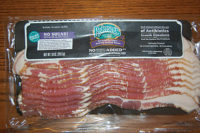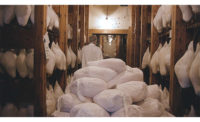The concept of an all-in-one-box meal has been around for years, going back to the first frozen TV dinners. Today’s meal kits are far removed from their earliest origins, though. These kits feature high-end, gourmet entrees with exotic, trendy flavors. They also add fresh produce to a category that traditionally has not seen strong ecommerce sales.
“Even the basic things we know about the meal kit category continue to evolve at a very, very rapid pace, says Meagan Nelson, Associate Director for Nielsen, Fresh Growth & Strategy Team. At the 2019 Annual Meat Conference, held this past March in Dallas, she gave a presentation that discussed the past, present and future of meal kits. She pointed out that meal kits have seen a 36 percent growth in a little under a year, and that 12 percent of total consumers have purchased a meal kit in the last six months. What’s more, 23 percent of total consumers would consider trying a kit in the next six months.
The category itself has seen many changes in a short amount of time. Within the last year, retailers and restaurants both made inroads with the meal kit category, with Kroger, Walmart and Chick-fil-A all unveiling new offerings. Online meal kit companies like HelloFresh unveiled seasonal product lines and entered into partnership with brick-and-mortar businesses.
“There is a massive shift into the in-store space in the last year,” Nelson says, adding that in-store meal kit users accounted for nearly 60 percent of growth.
The in-store kits are of particular interest, as Nielsen data shows that 87 percent of all in-store kits have meat. Beef can be found in 52 percent of those kits, with pork in 17 percent and chicken in 16 percent. Chicken, though, was the fastest-growing protein, with a 316 percent increase.
The changing U.S. population is affecting the recipes presented in these kits. HelloFresh, for example, has traditional favorites like ribeye or meatloaf. It also includes a variety of modern flavors, like pork & veggie bibimbap or chicken-pineapple quesadillas.
“When you look at the U.S. makeup, in 2014, 38 percent of consumers were either African-American, Asian, or Hispanic. By 2060, we're looking at nearly 60 percent of the U.S. population will be one of these three ethnic groups,” Nelson says.
That population change will increase the types of cuisines that will become familiar entrees in the U.S., among all consumers. Consumers of all demographics, particularly younger consumers, will look to meal kits as a way to break out of their dinner rut by providing something new and different.
“We see younger generations obviously dominating this piece, from the perspective that they tend to have a bit more exposure to these other cultures and cuisines, so they're a little bit more adventurous,” Nelson explains.
Indeed, Nielsen data shows that, among meal kit users, 72 percent like the fact that it enables them to try new recipes and to try different ethnic foods.
The processor’s perspective
Standard Meat Co. was an early player in the small pack meal kit space. It started a business relationship with meal kit company HelloFresh and has greatly expanded its capabilities as a result. Standard Meat has two facilities in Dallas and North Fort Worth, Texas and employs 537 employees. It had traditionally been a red meat processor for the foodservice industry, along with a few retail customers. The company’s versatility has made it an ideal processor for the meal kit sector.
“We have added capacity to our poultry operation. We only entered the poultry space a few years ago,” explains Ashli Blumenfeld, co-president and fourth generation of the Rosenthal family to work in the family business.
“We have also made our pack-off more efficient to accommodate small pack sizes (10-12oz),” she adds. “Prior to our work with meal kits, we were primarily foodservice oriented. Most of our foodservice customers buy in bulk vacuum sealed thermoform packaging - typical pack sizes are around 2.5 pounds.
“Although we have made significant progress, we are constantly researching new automation and equipment to help us increase throughput and operate more efficiently. We are a very technologically driven company,” Blumenfeld adds.
Given the nature of meal kits, she recommends that any other processor looking for business in the sector be as nimble as possible.
“The more flexible and accommodating you can be, the better partner you will be to the meal kit space,” she says.








